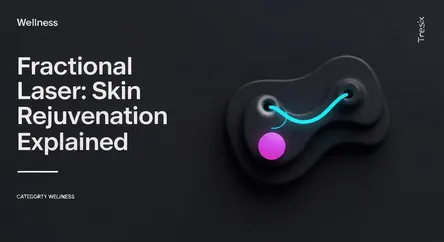Wellness
Fractional Laser: Skin Rejuvenation Explained

Discover fractional laser technology, a popular non-invasive treatment for wrinkles, scars, and sun damage with minimal downtime.
What is it?
Fractional laser technology is a non-invasive cosmetic treatment that rejuvenates the skin. It works by delivering a laser beam divided into thousands of microscopic columns, treating only a "fraction" of the skin at a time while leaving surrounding tissue untouched. This precise approach stimulates the body's natural healing process, boosting collagen and elastin production to create smoother, healthier skin. There are two main types: ablative lasers, which vaporize the outer layer of skin for more dramatic results, and non-ablative lasers, which heat the deeper skin layers without damaging the surface.
Why is it trending?
This technology has gained popularity because it bridges the gap between highly effective but aggressive procedures and gentler treatments with less noticeable results. It effectively addresses common concerns like fine lines, wrinkles, acne scars, sun damage, and uneven skin tone. A key driver of its trend status is the significantly reduced downtime compared to traditional ablative lasers. The precision of fractional lasers also minimizes risks and side effects, making it a safer, customizable option for a wider range of skin types seeking significant rejuvenation.
How does it affect people?
People undergo fractional laser treatments to achieve a more youthful and even complexion. The stimulation of collagen leads to long-term improvements in skin texture and firmness. Common, temporary side effects include redness, swelling, and a sensation similar to sunburn, which typically subsides within a few days. While generally safe, potential risks include changes in skin pigmentation, acne flare-ups, or, in rare cases, infection and scarring. To achieve desired results, a series of treatments is often recommended, with improvements continuing to appear for months afterward.